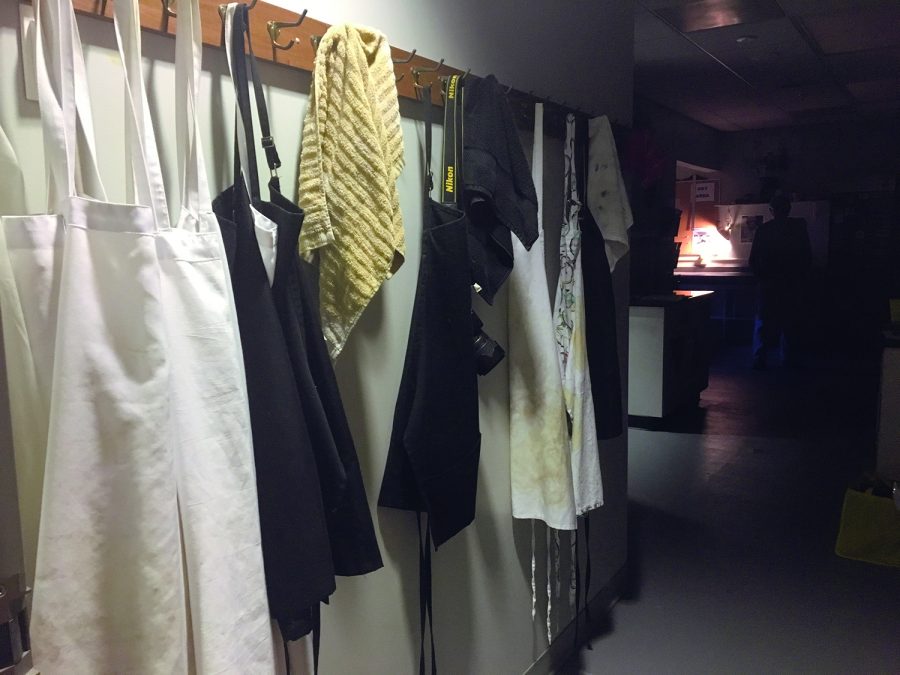Studios open to all at AACC
AACC students who want to use art spaces on campus, like the photography darkroom in Cade, can pay to use the labs without signing up for class.
August 21, 2019
When continuing education student Karen McGady studied architecture at AACC years ago, she enrolled in drawing, sculpture, ceramics and pottery classes.
Since she graduated, she has taken more classes in those mediums. And this semester, she said, “I decided to try screen printing.”
McGady, who said she works in the campus art studios at least once or twice every week, isn’t the only student who returns semester after semester to indulge her inner artist.
Student artists of all ages and mediums use the art studio spaces on campus to grow as artists and to work on personal projects.
“I think it’s an excellent thing and one of the reasons why there [are] so many successful artists that have attended AACC,” second-year fine arts student and Art Association President Scout Bender said about the studio spaces in Cade.
“I don’t work too well at home, so coming here is a nice space for me to just focus on my work,” Bender said. “The props that they do have in the studios are very helpful when it comes to studying anatomy forms and light work and color.”
Cade houses studio spaces for mediums from screen printing to game design. Students enrolled in art classes have access to the studio facilities in class as well as outside of class time.
“I like how open and free [the digital arts studio] is,” third-year animation and visual arts student Eyan Porter said. “I like the programs we use; I like the whole atmosphere and the students who are in it … we all have a goal.”
Porter said he also likes that art supplies are available for students who use the studios because “art is super expensive.”
Along with students taking for-credit classes, continuing education students, like McGady, use the studios.
“[The arts program is] outstanding,” McGady said. “More people should take art classes because it encourages critical thinking, analytic thinking, creativity obviously. It helps with all kinds of other areas of study. It’s mathematical. It’s scientific. It’s logical.”
Students do not have to take classes to use the campus studios. Instead, they may sign up for studio-access classes just to use the art labs.
Continuing education student Bob Ertman said he uses the campus darkroom.
“I do mostly black and white photography and some digital photography,” he said. “And while I’m in a place to take pictures, I usually take some digital pictures, too.”
Ertman uses the photography studio space to develop his alternative photo work, which involves photographing witness retreats at the sites of genocides. He belongs to Zen Peacemakers, a global network of social activists who promote social change around the globe.
“A home photographic studio is possible, but it’s really difficult to have a first-class darkroom with good enlarging equipment [and] with access to fresh chemicals,” Ertman said. “At home I would really be restricted to digital photography. And here you can put your hands into the art, and you can affect the light.”
“[Darkrooms are] expensive to set up at home, it’s dangerous … and it takes up a lot of room, too,” second-year photography student and lab tech Kathryn Ploetz said.
“This isn’t just any old darkroom, this is top-of-the-line,” Ploetz said about AACC’s analog photography studio. “It’s really impressive. This can support a 20-person class.”












